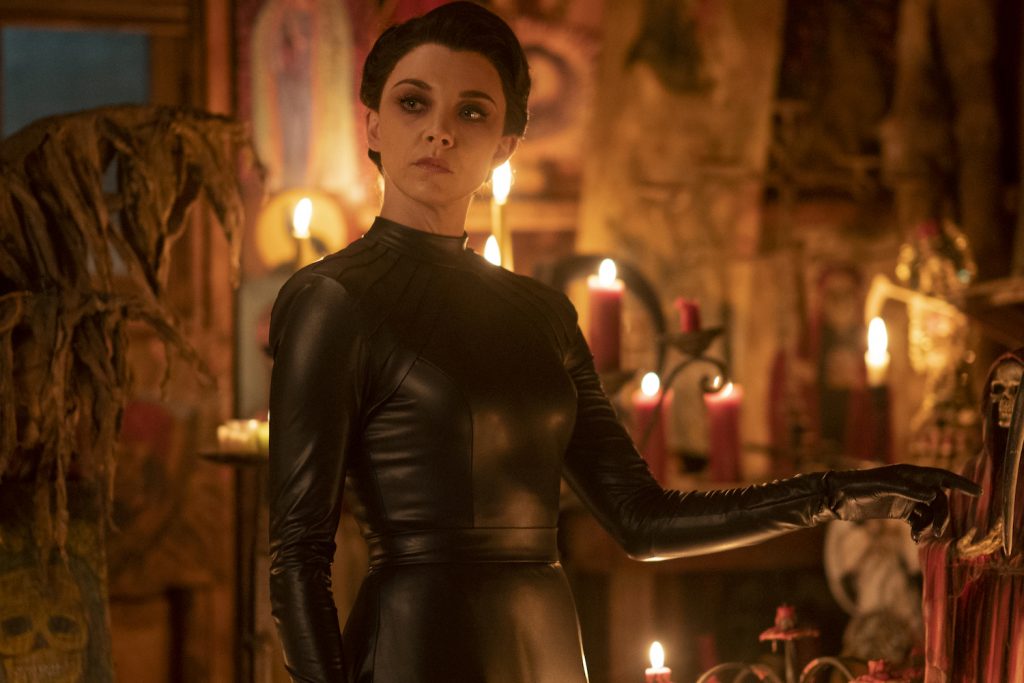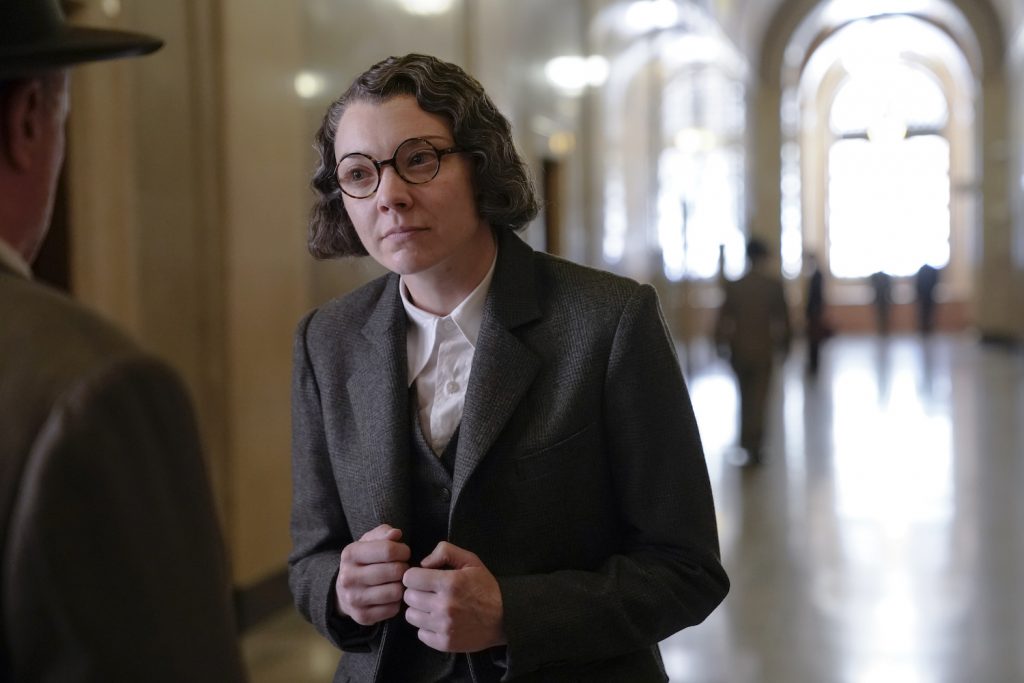With Showtime’s Penny Dreadful: City of Angels, series creator John Logan swaps Victorian London for 1938 Los Angeles. Having helmed three successful seasons of the original series, Logan began the next chapter searching for an actress capable of juggling multiple parts.
He found that creative vessel in Natalie Dormer, who had her own vision for the role of Magda. “I didn’t sign up to play a two-dimensional devil incarnate,” Natalie Dormer shares of her early conversations. “That was absolutely not on the menu for me.”
The SAG nominated actress deftly plays the shape-shifting demon, wreaking havoc on Los Angeles in the racially charged 1930s. Magda is determined to prove the inherent evil in humanity as she works through three personas: Rio, a rousing counter-culture fixture with her eye on rebellion; Elsa, a German immigrant suffering from domestic abuse; and Alex, an elderly political aide — a role which required Dormer to wear a mouthpiece.
Dormer, who first gained attention for her portrayal of Anne Boleyn in The Tudors and Margery Tyrell in Game of Thrones, is enjoying incredible praise for her work on the Showtime series. Dormer spoke to Awards Focus about the complexities of her four characters, counter culture in 1930s Los Angeles, and the scene in Penny Dreadful that surprised her most.
Awards Focus: Who was attached when this project came your way? Can you talk about those first conversations you had with the showrunner John Logan?
Natalie Dormer: My understanding is that I was the first person to be cast. I flew to meet John Logan in New York in January or February of 2019. I read with him and tried out some of his characters, the different voices and physical interpretations and he offered me the job while I was in New York.
AF: How familiar were you with the original Penny Dreadful?
Dormer: I binged all three seasons before going to meet John and thoroughly enjoyed it. Eva Green is a phenomenal actor, and so is Timothy Dalton. There were exceedingly strong performances from the entire cast. That extremely broad-spectrum ensemble seems to be a follow-through from that first iteration of Penny Dreadful to ours.
AF: How much of Magda’s character arc did you know when you signed on?
Dormer: Very little, I’d only read the first few scripts. When John pitched it to me, he focused on the relationship between the two sisters, Santa Muerte and Magda. There had been a falling out between them, and Santa Muerte seemed to put mankind before her sister. This greatly pained Magda, and she decided to prove to her sister that mankind wasn’t worth that choice. John described Magda more as a goddess than a demoness. In my mind, Magda was from a family akin to the ancient Roman or Aztec pantheon of gods.
AF: Knowing so little about Magda’s arc, what made you decide to take the role?
Dormer: First, it’s obvious that it would be a great gymnastic and creative exercise to play four characters. But I was also interested in John Logan’s theme: Is mankind innately bad or innately good? Will man ultimately always choose the baser, more selfish choices out of fear and ego? Magda’s position seems to be the latter. She’s a cynic of man, not a two-dimensional devil incarnate.

AF: Can you elaborate on the challenges and technique required to craft four unique characters?
Dormer: I just stripped it all away and went back to my fundamental acting tools. When you meet Magda’s first iteration, Elsa, John Logan had written in the script, “This is not prosthetics, this is not CGI. This is acting.” That’s very exciting, especially as an actor whose background is stage, where I’m even less reduced by physicality. But there’s a discipline involved in that. A vocal discipline—different voices for each character. A physical discipline—you change the way you move. It’s playing four characters for the price of one.
AF: Do you see them all as completely distinct?
Dormer: That’s the other thing—trying to come up with four psychologies as well. We realized very quickly that you couldn’t do a twisting of the mustache, winking at the camera type of acting.I had to play each character as a fully fleshed out human being, out of respect for the audience and for my co-stars. They’re in the truth of the moment, so you have to play truth with them. You can’t double-layer it. You are playing four psychologies in one job as well. It’s a mental and physical workout in that way.
AF: Which of the four do you feel most drawn to?
Dormer: I got the most professional satisfaction out of playing Alex. She was the biggest jump from my natural physicality, so I enjoyed that on an acting, technical level. Plus, I adore Michael Gladis (the actor plays Alex’s LA Councilman boss). We picked up a good rhythm with each other, with him playing Townsend. I never felt down on a day when I was playing Alex.

(Photo Credit: Warrick Page/SHOWTIME)
AF: Were there any scenes that you anticipated one way while reading the script that evolved on set in a surprising way?
Dormer: The dance sequence in the Crimson Cat. That was such a joy to do. One of the biggest thrills of this job was learning about Mexican American culture of the era, of Pachuco culture and Chicano culture. I was surprised that I wasn’t more aware of that counterculture and the Zoot Suit Riots of the early 40s. It was fascinating and I found that dance scene so joyous, because that sequence encapsulates the pride, defiance, identity, and celebration of a culture that is pushing to be heard and seen. It’s a youth revolution as well. You really get a snippet of that when you walk into the Crimson Cat.
AF: Can you tell me about the process of putting that together?
Dormer: The camera department worked in a very elaborate way. They shot with cranes, steady cams, and single shots so that they could encapsulate the movement and the vibrancy. I was really impressed with our production designer and our costume designer. You really feel that you were transported in time to 1938.
Johnathan Nieves and I were both dancers before we were actors, so getting to rehearse for six weeks to do that dance was an absolute joy. We were surrounded by incredibly talented dancers, but beyond that, it’s the entire atmosphere of the club and what it represents: that glorious, unorthodox defiance. To me, that sequence is about freedom, which is the American dream.


